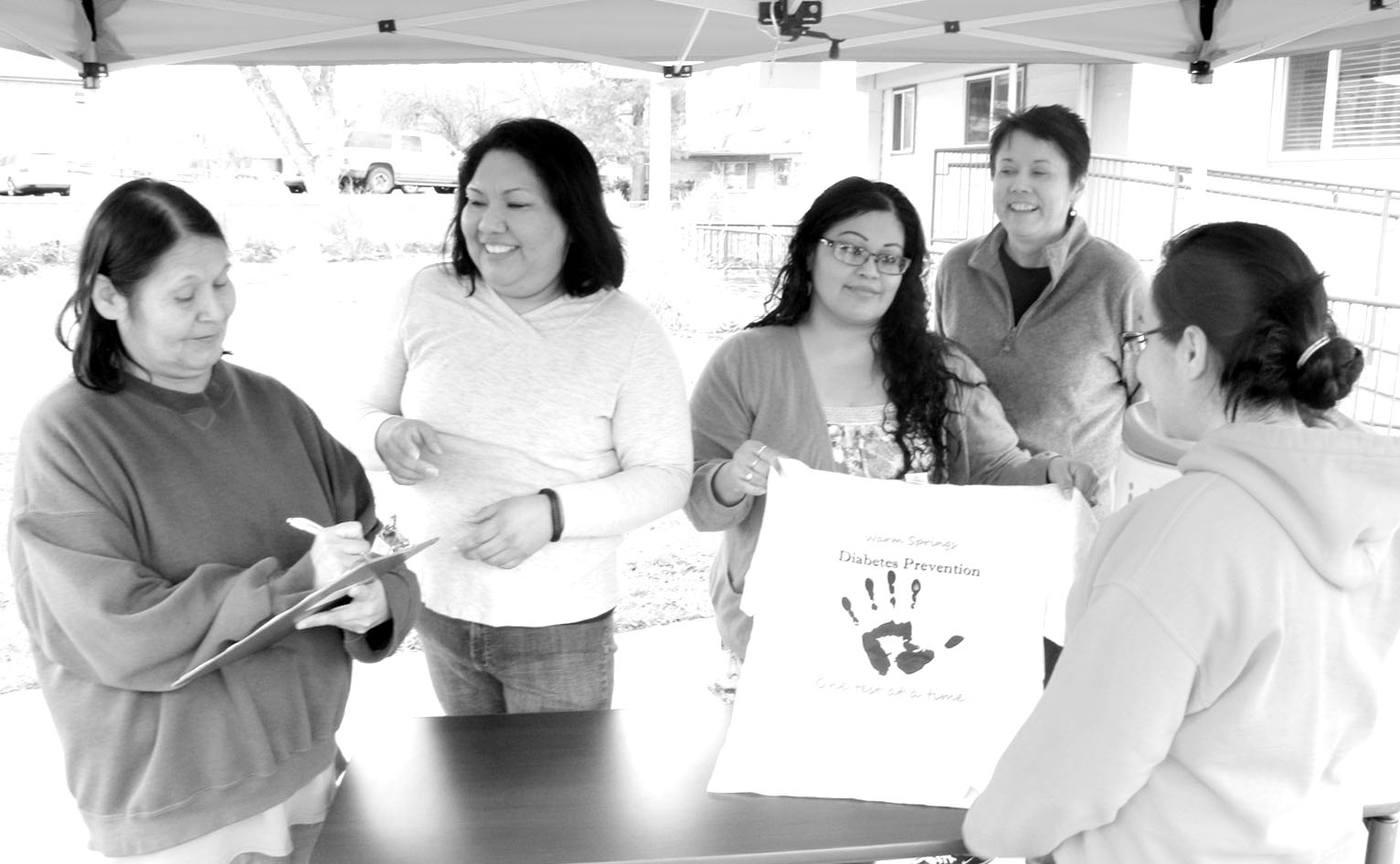Diabetes is a main health concerns on the reservation. Hundreds of tribal members are dealing with the disease, and many are focused on preventing diabetes. The Indian Health Service and the tribes are helping in the fight, with the Diabetes Program and Diabetes Prevention.
“We all believe in these programs,” said Montell Elliott, Prevention coordinator, who is also the interim Diabetes Program director.
“I had pre-diabetes, and I’ve been able to prevent it,” Montell was saying recently. Others on the staff have gone through the programs as well, and are now working to help others.
Some of the staff are lifestyle coaches, working one on one with the clients. Some people have been in the Prevention program for many years, and have avoided the disease.
Exercise is a big part of the solution, Montell says. A study has shown that exercise is more effective than medication in preventing diabetes.
Walking is the usual place to start with exercise. “We usually start out with 150 minutes of walking per week,” Montell says.
Montell is an Alaska Native—Haida Tlingit. She has been with the tribes for 23 years now.
Health report
The Joint Health Commission annual report looks at the leading causes of death on the reservation, year by year.
Diabetes remains a leading cause of death on the reservation. In the most recent year for which data is available (2014), the number of deaths from diabetes was estimated at close to 100. This number was the same as for accidents and cirrhosis.
The incidence of death from diabetes was trending downward in the recent years, from a high of more than 140 in 2009. In that year diabetes was the leading cause of death among tribal members on the reservation, according to the report.
“The majority of patients with diabetes died from related heart disease and kidney failure,” the report says. “This remains an area that needs emphasis for our local population.”
The report says: “Diabetes can be combated through healthier diets, increased physical activity, and reducing the number of overweight and obese people in our community.”
Patients of the reservation who are identified with the chronic disease of diabetes increased from 600 in 2011 to 627 in the year 2014. Identifying people who have the disease, or who have pre-diabetes, is critical:
“Detection of diabetes and control of blood glucose levels are essential to managing the progression of the disease, and delaying or preventing the resulting damage to the health of the individual.”
And most importantly: “Monitoring this group of patients, counseling and educational efforts can have a great impact on the health status of the patient, and the future health care costs of caring for patients with diabetes.”
There has been an increased focus on diabetes treatment at the clinic, as documented in the Joint Health Commission annual report on the Diabetes Program services.
The report shows the number of total Diabetes Program patient visits increased dramatically from the years 2011 to 2014.
In the year 2011, there were a total of 3,963 Diabetes Program visits. This increased steadily over the following three years, to 7,337 visits in the year 2014.
The increase is due mainly to “clinician clinical visits,” which went from 1,931 in 2011 to 5,254 in the year 2014.
The Diabetes Program was fully staffed during 2014, the report says. The staff included the Program Coordinator, Nurse Practitioner, RN, Certified Diabetes Educator and Administrative Assistant.
There were major awareness events during the year as well, including the Diabetes Awareness Day Conference, the Heath Smart Dinner, Honor Seniors Day, the Pi-Ume-Sha Health Fair, Senior Center Diabetes Support Group dinners, the Youth Support Group, the Food Demo and Support Group, and the Culture Camp.


